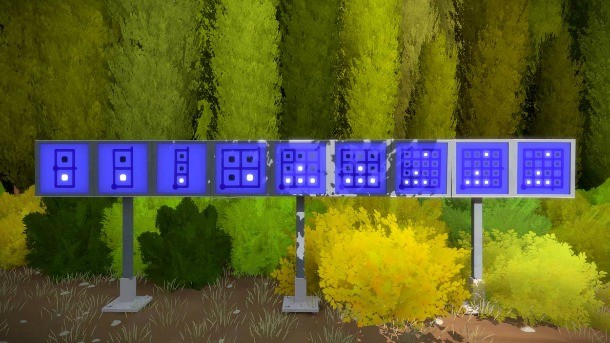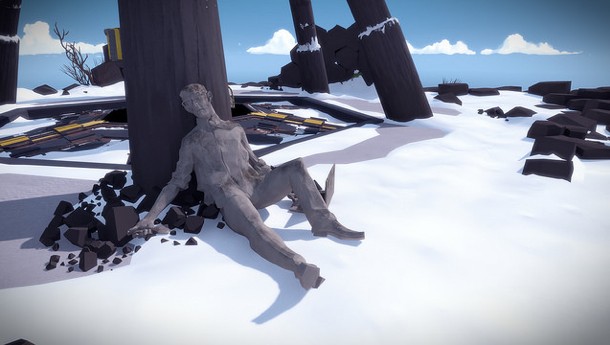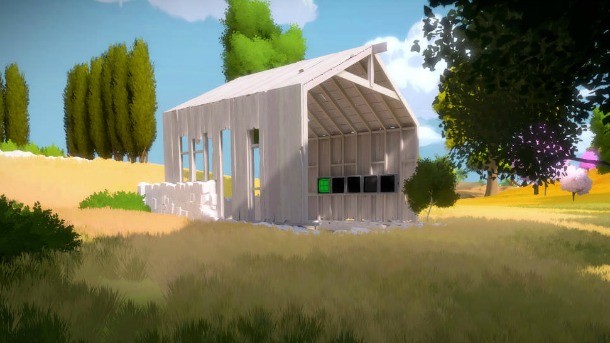Afterwords – The Elegant Challenge Of Jonathan Blow's The Witness

The Witness is one of the early success stories of 2016, with critical acclaim (including our review) and encouraging sales numbers. Developer Jonathan Blow and his team at Thekla began the project in 2008, but the years of waiting have paid off for players in the form of an intriguing puzzle game unlike anything else. We chatted with Blow about creating the experience, the significance of certain puzzles, and his reaction to the whole pee-bottle thing.
This article originally ran in Game Informer issue 276.
In 2014, reports indicated that The Witness was nearing the finish line. Were there any big changes that pushed the release to 2016?
Nothing really changed. “Finish line” is relative, right? I didn’t think it would be as long as it has been; I was thinking, “Oh, maybe six or eight months, we’ll have this wrapped up.” But everyone has a different interpretation. Basically, that was a time when all of the major components of the gameplay were finalized…it just maybe needed to go faster, or certain objects needed to feel better. Because it’s such a big game, this finishing took a long time. If it comes down to working on it three more months or having something be kinda crappy, I’d rather work on it three more months. There was no dramatic setback or anything.
Are the puzzles able to enforce their own rules, or did you need to manually program all possible solutions?
All other things being equal, it is best if the program knows how to judge a puzzle, because it’s less error-prone. If I have to put in the solution, then I might make a mistake, especially when there are so many possible solutions that I might not see some of them. For most of the puzzle types, the program knows how to verify that a solution is correct, so I don’t actually need to foresee all correct solutions… But then there’s stuff in the game that the computer doesn’t really know about, and those solutions are all put in by hand – like when shadows are falling on an object in a certain way. That’s just not something the computer knows how to analyze.

So, if someone thinks they have a correct answer that isn’t being recognized properly, they’re wrong?
They’re probably wrong. In fact, every single one of those that anyone has sent me is wrong.
Do any of the puzzle themes stand out as being particularly difficult to design?
The thing that was hardest to design well is the cylinder puzzles. Because, you can wrap a puzzle around a cylinder, and that’s fine; you automatically have a human factor now, since you can’t see the whole puzzle. But if it ends up being a puzzle that you could solve just as well on a flat board, then why is it on the cylinder? It’s not interesting… So, all of the cylinder puzzles are made in such a way that either the connectivity of the space matters, or the fact that your line has to go all the way around matters.
Those cylinder puzzles defy sharing solutions through screenshots. Was that a reason for them being so near the end of the game?
It was more just about building up to interesting ideas. That whole end-game shaft area is about taking the ideas from earlier in the game and putting them together in a way that involves messing around with the presentation. The medium between you and the puzzle. Though, there is one of those cylinder puzzles very early in the game, also. Even though it’s right there, we sort of build the scene so that people tend to overlook it and go right past it.
Most of the design seems deliberate and purposeful, which makes certain things (like the discarded triangle panels) conspicuous. Does every panel in the game do something?
It depends on what you mean by “do something.” The triangle panels, for example, definitely do something, because otherwise there would be no way for you learn what the more complex triangle panels mean. Do they do something in terms of opening a door somewhere? No, they don’t… They do get checked off on the lake in middle of the island, so another thing they do is make you feel good about completing the lake. Usually things have another purpose or bearing on something else.
Many players need to use pencils and paper to help work through puzzles. Was that something you were consciously trying to bring to the experience?
I wouldn’t say that I was deliberately designing for pencil and paper as an agenda, but I would say that I was definitely designing counter to the trend of the last decade or more of just making games really easy and making puzzles not be real puzzles. Triple-A companies especially do all this playtesting, and anytime someone gets stuck on something or gives negative feedback, they change that thing. The thing about hard puzzles is people are going to get stuck on those, and they’re going to say, “I didn’t like this.” It’s just being willing to say, “No, this going to be in the game.” Maybe if they’re super-hard, they’re optional. You have to be willing to have that stuff in the game.
The audio recordings that address the story directly are hidden in an optional end-game area. Why not let players uncover them during a normal playthrough?
It all came down to how big I wanted the story to be in the ultimate experience. In early concepts of the game, I thought that story was going to be a very large part. But then as development went on and I refined the game, I kept revisiting the story and being very unhappy with the way my concept of the story would play out. Eventually I decided that the story should be pretty small, in terms of how much of the experience it makes up… I also don’t like giving story as a reward for ongoing play; I felt like I wanted to make a game that had confidence, that people really wanted to play the actual game part of the game, that doesn’t need to coax people through by giving them story bits.

How did you select the videos for the Windmill theater?
It was really about knowing what kinds of ideas that I wanted in the game, and the kind of presentation. All of those videos are, in one way or another, people talking about ideas about how to see the world. They are well-thought-out viewpoints from people whose life work is that. But the other thing about them is that they’re all different viewpoints. I’m not trying to put a bunch of things together to make a unified point or convince the player that these people are saying different flavors of the same thing. They’re saying different flavors of different things, and that ties into what the game is about at some level.
Some of the puzzles are inaccessible to some players – especially those who have trouble hearing or seeing colors. Was this a consideration during development?
We were very aware of that during development. I actually spent a lot of design time trying to design puzzles that only colorblind players could solve, but I didn’t succeed at that. But the way that I designed for accessibility is to just be aware that some people aren’t going to be able to do all of the puzzles, and then make it possible to complete the game without those puzzles. There are a few specific times where that happens. One very obvious example is the sound-based puzzles; you’re just not going get one of the lasers if you can’t hear… It’s a similar thing with the color-blindness; there’s basically one laser that requires color sense. But the surprising thing is that most color-blind people don’t seem to have a problem in that area… But it is still a problem for some people, because there are different kinds of color-blindness and magnitudes. There are only a couple areas of the game that are mandatory. To get the ending, you only need seven lasers… but there is a secret area that does require every laser. You know what? If people want to get there, and they have to look stuff up on the Internet to get there, that’s fine. I’m totally cool with that.

What did you think of the response to your tweet about the pee bottle?
It was bewildering! Here I was with a prop we used in filming – it was a bottle of water with some food coloring in it – and I was about to dump it out, and I was like, “I should get a picture of this before I dump it out.” I already had done one about a week before saying, “Here’s something I made in order to help finish The Witness,” and it was glasses with tape on them and holes in the tape… So, I was like, “I know what to do with this bottle, I’ll tweet another one of those.” But I expected people to know that it was a joke, and it would be mildly funny at best. For some reason, people didn’t know if it was a joke, and a lot of people assumed it wasn’t. I saw indie developers going off about quality of life in response to that. Like, full-on 10- or 15-tweet barrages about how this isn’t a healthy way to develop games. I’ve been a human male for 40-something years now; it doesn’t take very long to get up for a second and go to the bathroom. It just doesn’t. The idea that it would be plausible that someone would feel like they didn’t have time to do that is fundamentally not credible. I don’t know. It was very strange.
You’ve said that The Witness has been successful enough to fund another project of similar depth. How long until you start thinking about what’s next?
Well, I’ve started thinking about it already. However, there’s a difference between thinking about it and designing a thing for real. In terms of actually sitting down and starting to work on the game in a real way, that probably will not happen for a couple of months. There’s a lot to do right now, and I need a little bit of a vacation.

Get the Game Informer Print Edition!
Explore your favorite games in premium print format, delivered to your door.
- 10 issues per year
- Only $4.80 per issue
- Full digital magazine archive access
- Since 1991









